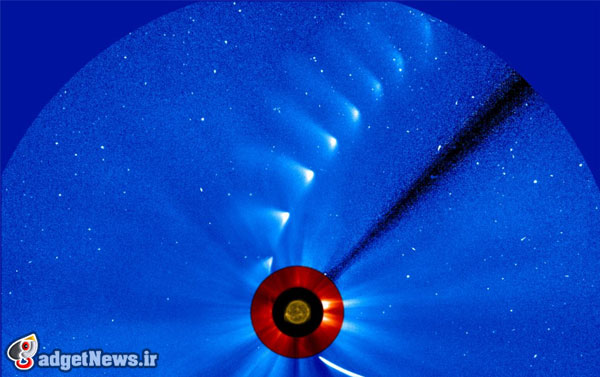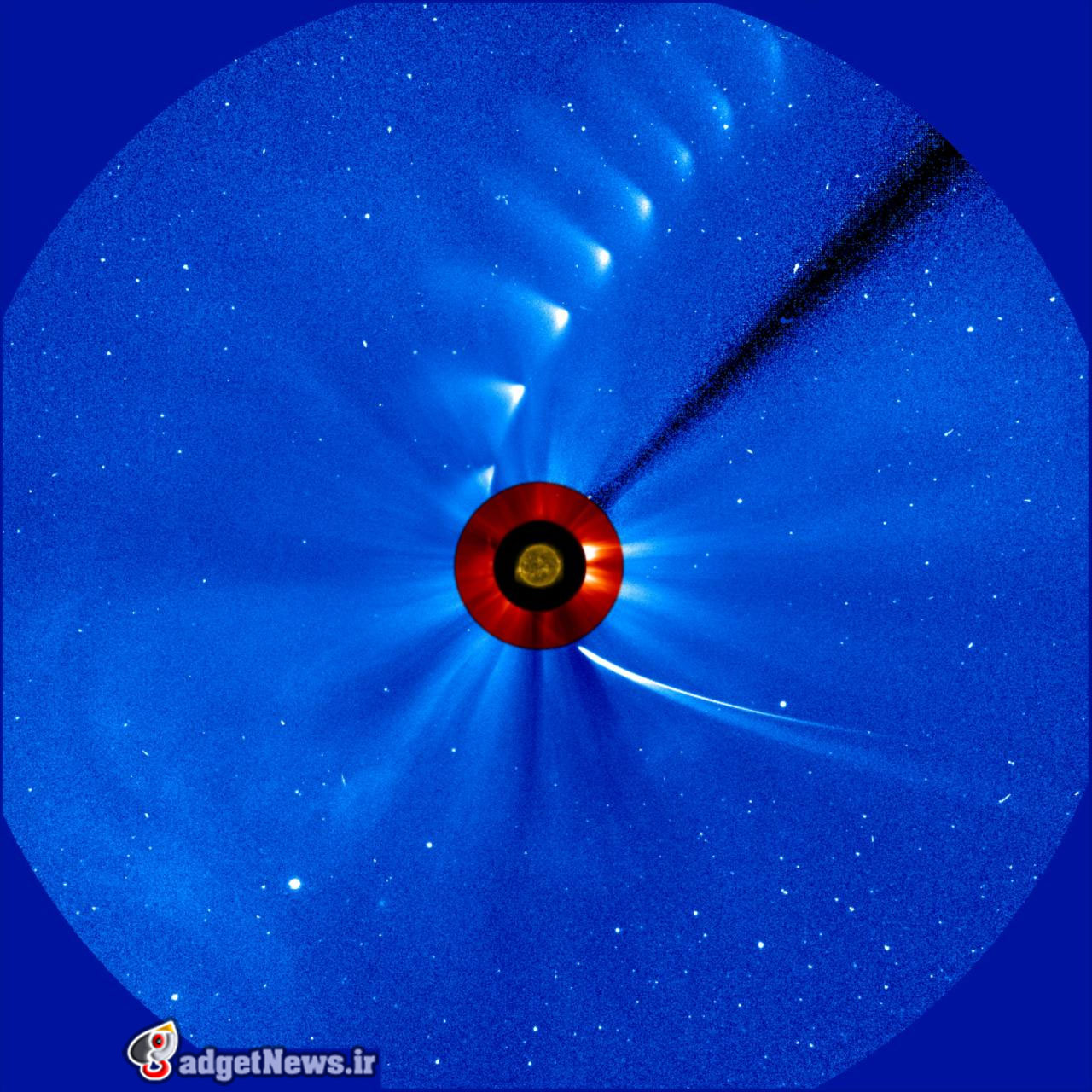
ناسا با انتشار آگهی مرگ دنبالهدار قرن در وب سایت کمپین رصد «آیسان»، از پایان رسمی سفر 5.5 میلیون سال نوری این دنبالهدار خبر داد.دنبالهدار آیسان سال 2012 میلادی در فاصلهای دورتر از سیاره مشتری بوسیله دو منجم آماتور با استفاده از شبکه نوری علمی بینالمللی روسیه (ISON) کشف شد.
این دنبالهدار پس از یک سفر 5.5 میلیون سال نوری به درون منظومه شمسی، روز پنجشنبه 28 نوامبر (هفتم آذر) از فاصله 1.2 میلیون کیلومتری خورشید عبور کرد.در این اقدام انتحاری، دنبالهدار با سرعتی بالغ بر 350 کیلومتر در ثانیه از جو خورشید عبور کرده و حرارتی بالغ بر دو هزار و 760 درجه سانتیگراد را تجربه کرد.

در ابتدا به نظر میرسید تکهای کوچک از هستهی یخی آیسان از جهنم تاج خورشیدی سالم مانده و در حال دور شدن است تا به آسمان شب برگردد، اما با دور شدن از خورشید به سرعت کمفروغ و محو شد و نشان داد که هسته متراکمی باقی نمانده و آیسان در تاج خورشید نابود شده است. گاز و غبار بازمانده از دم و گیسوی دنبالهدار کماکان در فضا در حرکت است و این توده بسیار محو و کم فروغ ممکن است در تصاویر بسیار عمیق و با میدان دید باز از آسمان در شبهای بعد ثبت شود.

«کارل باتاماس» از متخصصان اخترفیزیک آزمایشگاه تحقیقات نیروی دریایی (NRL)، آگهی مرگ «آیسان» را بر روی سایت کمپین رصد دنباله دار ناسا منتشر کرد.
اخترشناسان معتقدند این دنباله دار مربوط به شکل گیری منظومه شمسی در 4.5 میلیارد سال قبل است؛ خانواده دنباله دارها که آیسان نیز به آن تعلق دارد، از محلی به نام ابر اورت (Oort Cloud) سرچشمه میگیرند که در فاصله 10 هزار برابر دورتر از فاصله خورشید تا زمین واقع شدهاند.
منبع : spacedaily
Comet ISON is confirmed dead after brush with Sun
A comet that grabbed attention worldwide for being likened to a massive snowball in space did not survive its brush with the Sun last week, NASA confirmed on Tuesday.
"Though the exact time of ISON's death is uncertain it does appear to be no more. All that is left is a cloud of debris without a nucleus," C Alex Young of the NASA Goddard Space Flight Center told AFP in an email.
Dubbed the "Christmas Comet," the icy giant described as a massive, dirty snowball skimmed past the Sun at a distance of just 730,000 miles (1.17 million kilometers) around 1830 GMT on Thursday.
It had been estimated that ISON would undergo temperatures of 4,900 degrees Fahrenheit (2,700 Celsius)and lose three million tonnes of its mass per second as it made its journey around the sun.
Most astronomers had predicted the comet, with an estimated diameter of some 0.75 miles (1.2 kilometers), would not survive the flypast.
Still, some observers had held out a sliver of hope that the 4.5 billion-year-old comet might have survived.
Karl Battams, a scientist at the Naval Research Laboratory, wrote a brief obituary for the comet, formally known as C/2012 S1 (ISON) after the telescope called the International Scientific Optical Network used by the Russian astronomers who spotted it in 2012.
"Never one to follow convention, ISON lived a dynamic and unpredictable life, alternating between periods of quiet reflection and violent outburst," Battams wrote.
"Survived by approximately several trillion siblings, Comet ISON leaves behind an unprecedented legacy for astronomers, and the eternal gratitude of an enthralled global audience."
 گجت نیوز آخرین اخبار تکنولوژی، علم و خودرو
گجت نیوز آخرین اخبار تکنولوژی، علم و خودرو 





